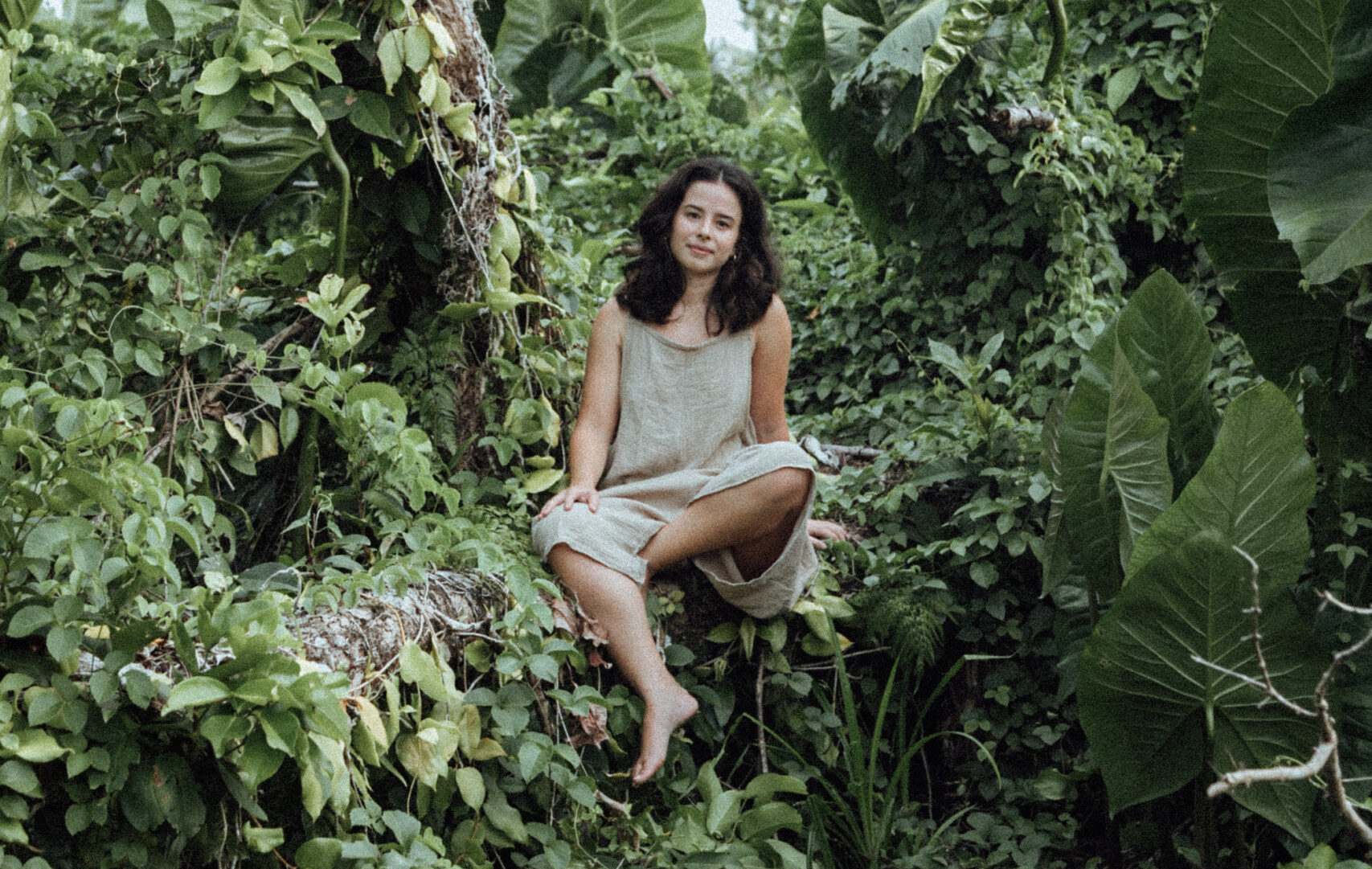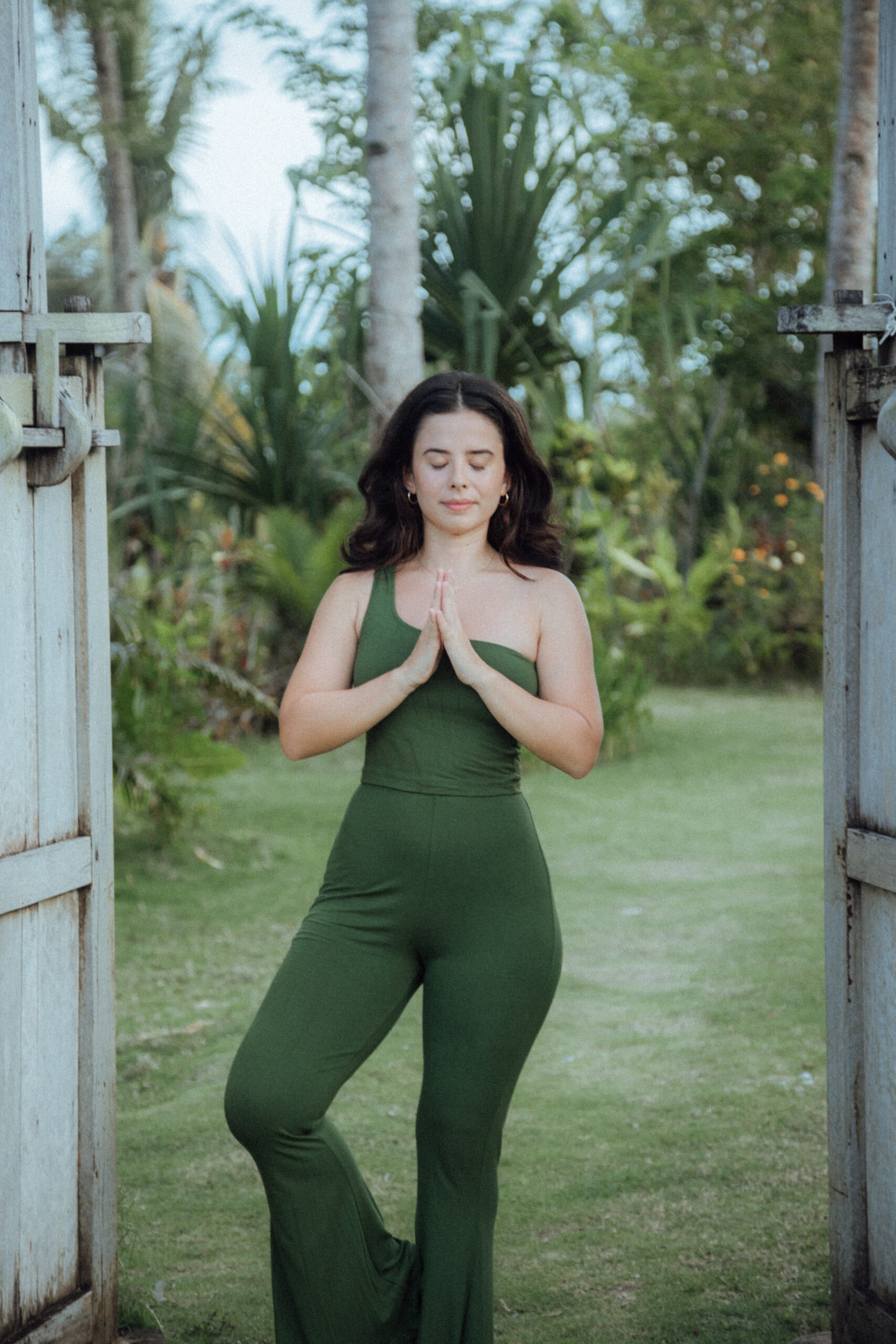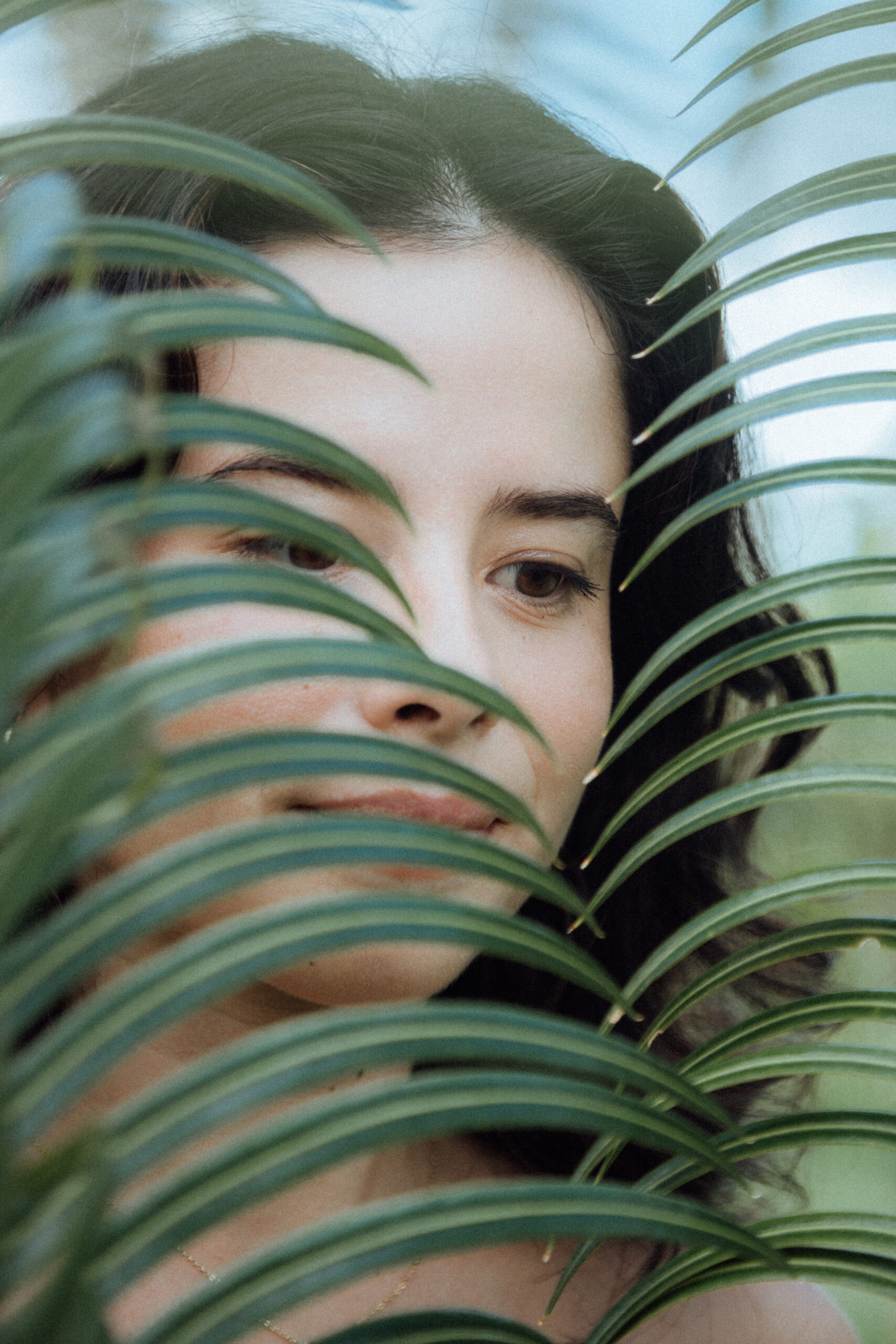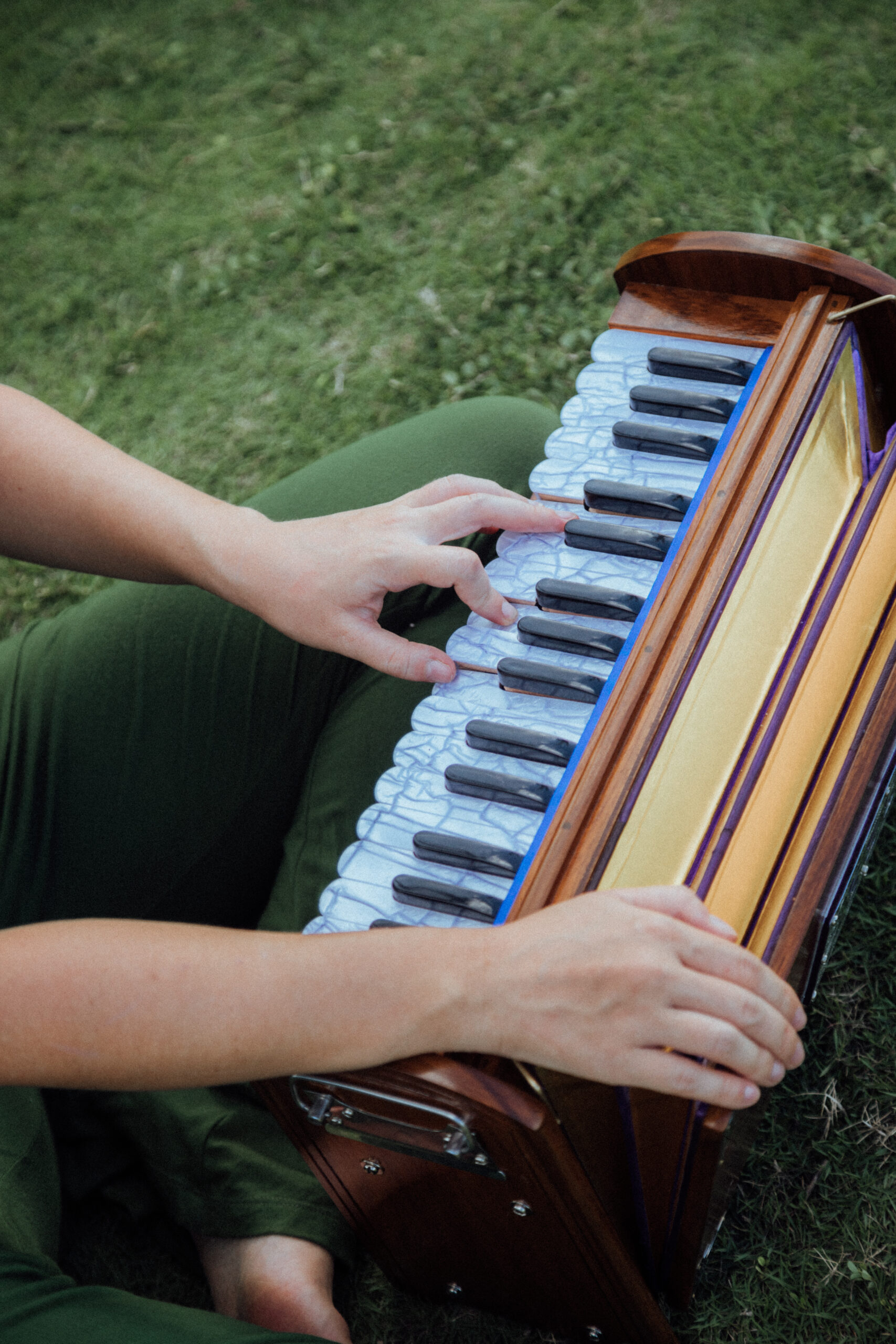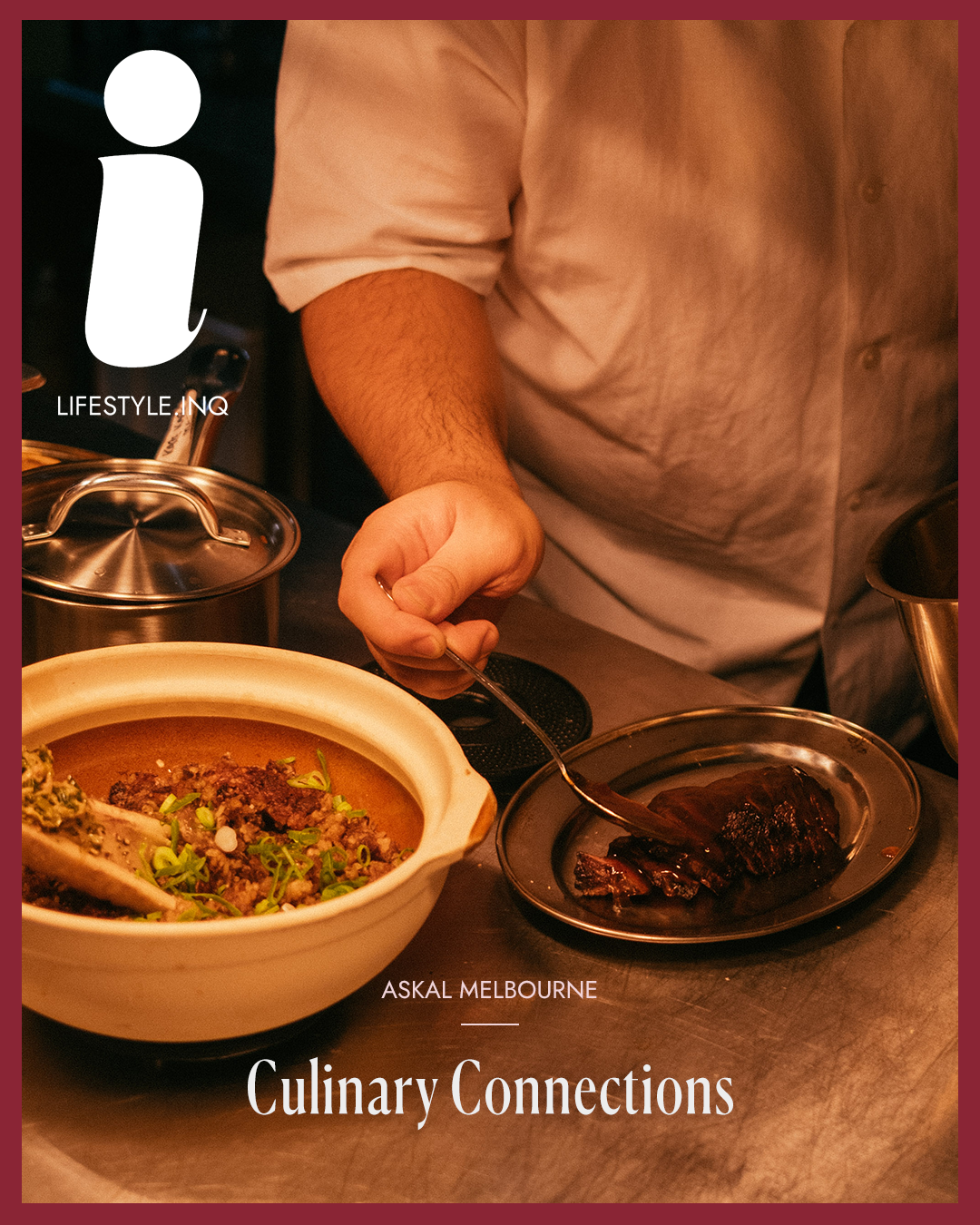Going beyond the mat, Kaye Aboitiz is shifting the ethos of how yoga is practiced in the country, as she transcends the physical postures to delve into spiritual and emotional dimensions.
Yoga can swing two ways: One path involves practicing within the confines of a studio, often charged with erratic, almost hysteric energy. Here, a teacher may push you to stretch your muscles to their limits or attempt complex poses like the floating crow. The other path is gentler, embracing a mindful approach that respects each individual’s boundaries and the body’s energy centers. This approach is deeply attuned to the rhythm of each breath and embraces nature’s elements – the rustling of leaves if outdoors, or the vast sky from a window. While yoga’s history is rich with diverse forms and practices, Kaye Aboitiz gravitates towards the serene latter, both in her teaching and personal practice.
Kaye (pronounced Kah-yeh) tells me she is named after a Basque saint, but later in life discovered her name’s origin comes from “Gaia” — the embodiment of nature and earth. I think how fitting her name is, which becomes even more pronounced as she suddenly gushes about the many plant species and strange insects in Siargao, her current island home.
Originally from Cebu, Kaye’s relationship with the fast-developing beach town goes back decades. She recalls visiting Siargao often with her family in the late ‘90s and early 2000s, painting a world with a rustic lifestyle intertwined with unspoiled nature.

Since those early visits to the island, Kaye takes us on a journey through the twists and turns of her life’s path. She shares her story as she immersed herself in both traditional and yogic education, all the way to how she chose to embrace the introspective realm of Bhakti Yoga and the melodic practice of Kirtan chanting—both rare yogic practices in the Philippines.
Amidst these experiences, she recounts her encounter with the powerful typhoon Odette and hints at her recent endeavor to establish an accessible yoga sanctuary on Siargao island. Throughout, one resounding theme emerges: the vital importance of cultivating a community, particularly one that empowers women.
Bridging Academia and Yoga: A Journey of Expansive Education
“It’s dangerous, having all of these courses available that you can learn from. It’s addicting!” Ever the relaxed student, I respond with a lopsided smile. I can’t relate.
Kaye Aboitiz’s pursuit of education has taken her to various avenues of study, including online courses and in-person sessions in both Bali and Manila. Additionally, she engaged in multiple one-on-one tutorials and workshops. Her passion for learning is palpable, and she seems to have an unquenchable thirst to learn. Throughout our conversation, she mentions this book that she’s reading, or this branch of yoga that she’s studying. It makes sense when she mentions that she went to boarding school, where she experienced years of discipline and rigor, typically studying six days a week.
For University, she finished a BA in History of Art, with a degree half with the University College of London, the other half with the School of Oriental and African Studies. With a focus on the History of Art in Southeast Asia, much of her studies covered Hindu and Buddhist temples. This continued as she accomplished an MA in History of Art and Art Theory, focusing again on Asian heritage, which encompassed Hindu, Buddhist, and Islamic artists – with virtually no Western or European art history. It’s funny how things in life fall together, as Kaye connects the dots:
“So much of what I’m doing now is inspired by what I was learning when I was eighteen or nineteen — all these temples and spiritual places. We would study the mudras of Buddha in historic sculptures. All of those things are in the back of my head when I’m teaching.”
After eleven years in the U.K. working on what Kaye called “the most corporate job in the art world,” she recalls, “At some point, I reached a saturation point. You know when you graduate college and you want to become something? Then eventually you become it, and you’re like, ‘Is this it?’”
Walking Through a Yoga Class with Kaye
Last year, Kaye Aboitiz did her hours for Trauma-informed yoga teaching at AV108 in Taguig. But it was in 2021 when Kaye finished her first certification with a 200-hour yoga teacher training in Yin, Hatha-Vinyasa, and Yoga Nidra at the Lotus Shores in Siargao, as well as doing a Devotional Sound course with Ellen Arthur in the same year.
There are many yoga paths, from the focus on the duty of Karma Yoga and the self-realization of Jnana Yoga. Kaye Aboitiz follows the spiritual path Bhakti, a practice focused on devotion towards any personal deity. In her own words, Kaye describes it as “the yoga of love, surrender, and devotion… less focused on Asanas and more inclined to the inner gaze.”
She says on Bhakti,
“If you’re naturally emotional, it focuses on finding a way to understand or pivot your emotions in relation to the divine, depending if you believe in a higher power or not.”
A class with Kaye would reverberate with the sound of chanting Sanskrit mantras, accompanied by a classical Indian instrument such as the harmonium, in which Kaye plays the keys as the teacher. The mantra can be chanted in a community, in the form of kirtan, but she also guides students in building their personal chanting practice with the help of a Japa mala, rosary-like prayer beads meant to purify the mind and develop self-discipline in tune with examining one’s inner landscape.
The environment of Siargao welcomes a kind of openness and checking-in dynamic, and the teacher tells me how she adjusts her class according to what she gauges from what people are feeling that day or the energy level in the room. A yoga session with Kaye is likely to be relaxed, with asanas geared toward healing and restoring physical posture. She says,
“I’m a big fan of always using props, and not pushing your body to the point of injury or moving with a punishment mindset. It’s my number one pet peeve, that mindset of ‘I have to earn it.’”
The Value of Community and Connection
I’ve been told at one point that yoga is best practiced on your own, so as not to absorb the energies of other people. I ask Kaye her thoughts on this, and while she agrees that cultivating a yoga practice on your own is important, it’s even more important to go beyond the self.
“You can think your practice is perfect when you’re on your own and in your room. But in Bhakti yoga scriptures, friendship is mandated… Not that you have to be close friends with everyone, but that you have to learn to accept the support of a community, especially when you feel you’re going to fall.”
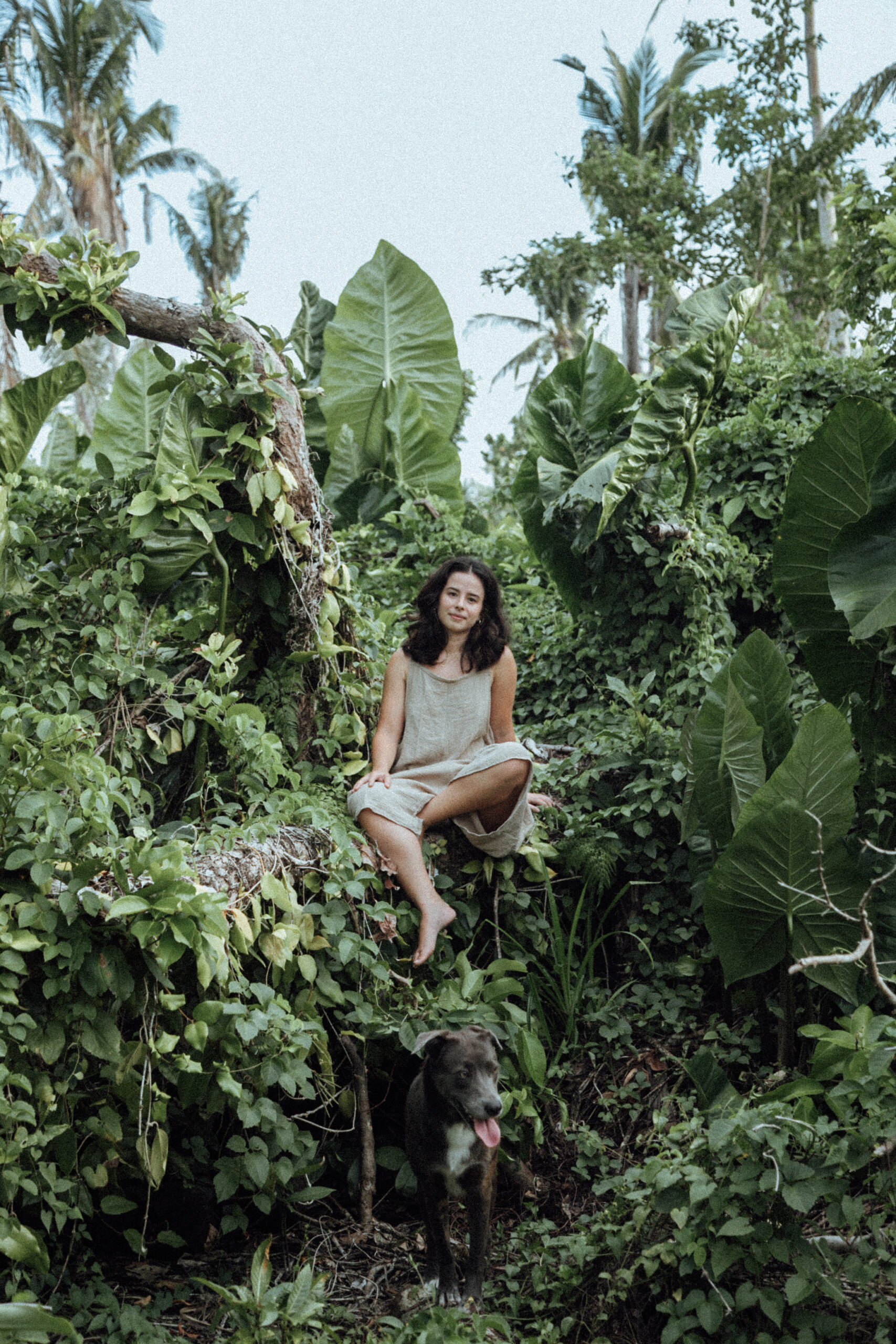
The projects Kaye works on in the Visayas are focused highly on collaborations with women. She mentions retreats in Soul Sierra Cebu with Kymberly Muego, as well as the woman-owned Siargao resort Inara by Natalia Zobel. Yet what she calls her “home spot…like family” is the iconic Siargao yoga shala Lotus Shores, where she started as a student till co-teaching as an instructor. Kaye quotes Leela Albano, the founder of Lotus Shores, as she harkens back to the core concepts of a community,
“Being in a relationship is the most refining of fires. When you are in a relationship with others – your partner, your friends, your co-workers, that’s when it’s tested—how strong your devotion to your practice is.”
Kaye was staying in one of the rooms in Lotus Shores during the devastating typhoon Odette. As she watched the storm through a crack in the window, she could see her beloved Kirtan instrument, her mentor’s harmonium. It teetered on the edge of the reception, and for some reason, stayed solid, unmoving, even if the trees were blowing sideways. The next morning, amidst the destruction, with no power and no water, Kaye sat in front of her harmonium and sang. Stranger than fiction, when she moved the instrument, one of the most beloved statues of the retreat was miraculously there. She reflects, “I think for anyone that existed and stayed after the storm, it formed a very tight bond.”
Future Plans for an Inclusive Studio
The viciousness of Odette affected many people on the island, creating a need for trauma-sensitive practices, which Kaye plans to offer in a new yoga shala she is building in Malinao, on the quieter part of Siargao.
Kaye describes the building plans as, “a very simple shala, but with a sound feeling and minimal distractions. There’s going to be a lot of personal touches like artwork and different things personalized by people that live here on the island. Not just a white box. It will be more personal, more grounded.” Despite the logistical difficulties of building on an island, Kaye proudly shares that the studio will have air conditioning, something that is taken for granted in the city, but uncommon on the island.
While the studio will be based on universal design, Kaye is putting her best efforts to make the shala infrastructure as accessible to as many people as possible — be it a young man on crutches, an older woman in a wheelchair, or somebody with a temporary injury. There are many adapted yogic practices for those with disabilities, and Kaye gives an extreme example of Yoga Nidra meditation, which can be practiced if someone is paralyzed from the neck down.
“That’s why I’m building. Even if one person in a wheelchair, or one person with a walker moves us in a year, I’m happy with that. It’s unfair to see someone struggling to get to your class, and people would have wanted to go… I think if we’re building for the future, we build with accessibilities in mind.”
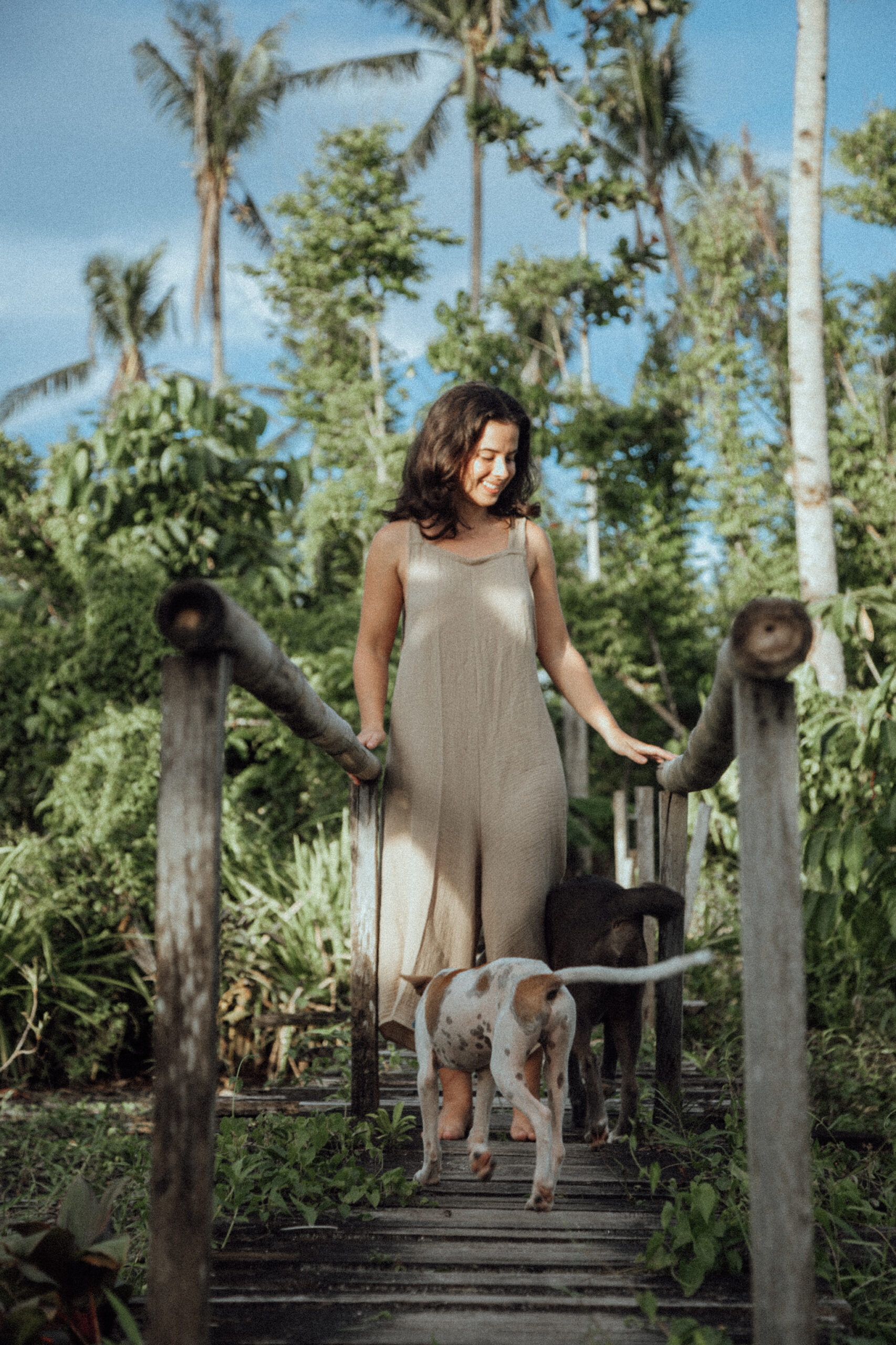
It can be hard to get yourself to a yoga class. Apart from the physical challenge of Asanas, the first hurdle is always that mental step. Kaye says, “I love Instagram because you can do these surveys and get people to talk without being shy. It’s crazy, the amount of responses where people say, ‘I don’t want to come to class because I’m not flexible’ or ‘I feel stupid and that I’m going to make a mistake.’”
“People see so much on media about what yoga is, and it’s all people doing handstands. That’s why I’m a fan of having a yoga friend who is going to be like, ‘Girl, let’s go.’ If we’re in it together, it’s going to be okay.”
At the start of our 11 am call, I was jittery after already having had two cups of coffee. By the end of our chat, I felt completely calm. Even virtually, the presence of Kaye transmits a sense of healing as she holds a firm and steady space.
In my past yoga classes, the teachers would often instruct the class to feel every motion and observe every thought without judgment. Kaye seems to have mastered this mindset of understanding, as both her words and concrete actions show an openness to understand, accept, and support others without passing judgment.
With a transformative vision, Kaye Aboitiz urges practitioners to shift their focus inwards, through the expansion of Bhakti yoga and Kirtan chanting. As she establishes her own inclusive yoga studio on Siargao island, Kaye is contributing to the shift of the landscape of yoga in the Philippines, to an experience that encapsulates the true essence of the practice.

